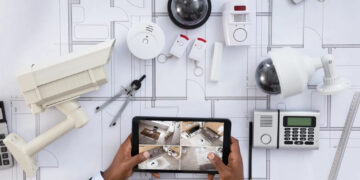In today’s interconnected world, the issue of unauthorized surveillance has become increasingly prevalent. One of the key tools in this realm is eavesdropping equipment. This equipment is used to secretly listen in on private conversations and monitor communications without consent, raising significant concerns about privacy and security. Understanding the nature of eavesdropping equipment and its implications is crucial for protecting sensitive information and ensuring personal and organizational security.
What is Eavesdropping Equipment?
Eaves dropping equipment refers to various devices and technologies designed to intercept and record conversations or communications covertly. These tools can range from hidden microphones and audio recorders to sophisticated digital surveillance systems. Often small and discreet, eavesdropping devices can be installed in a variety of locations, including offices, homes, and vehicles, making them a versatile and potentially invasive threat to privacy.
The technology behind eavesdropping equipment has evolved significantly, allowing for more effective and harder-to-detect surveillance. Modern eavesdropping devices can transmit data wirelessly, making it possible for perpetrators to monitor conversations remotely. This advanced capability increases the difficulty of detecting and neutralizing these threats, highlighting the importance of effective countermeasures.
The Implications of Eavesdropping Equipment:
The presence of eavesdropping equipment can have serious implications for individuals and organizations. Unauthorized surveillance not only breaches privacy but can also compromise sensitive information, leading to potential security risks and loss of confidentiality. In business contexts, eavesdropping can lead to intellectual property theft, competitive disadvantages, and damage to reputation. For individuals, it can invade personal privacy, leading to emotional distress and a sense of vulnerability.
The consequences of eavesdropping extend beyond immediate privacy concerns. For organizations, the unauthorized collection of confidential information can have legal implications and result in costly lawsuits. Furthermore, the breach of trust between parties involved can have long-lasting effects on business relationships and personal connections.
Addressing Eavesdropping Threats:
To combat the risks associated with eavesdropping equipment, it is essential to employ effective countermeasures. Detecting and neutralizing such devices requires specialized knowledge and tools. Professional services, such as those offered by Global Counter Intelligence Specialists, provide comprehensive solutions for identifying and addressing eavesdropping threats. These experts utilize advanced detection techniques and equipment to locate hidden devices and secure communication channels.
Counter-eavesdropping services typically include thorough inspections of premises, electronic sweeps, and risk assessments. These measures help identify potential vulnerabilities and ensure that any eavesdropping equipment is promptly detected and removed. Additionally, implementing ongoing security protocols and training can further protect against unauthorized surveillance and enhance overall privacy.
Conclusion:
The issue of eavesdropping equipment underscores the critical importance of maintaining privacy and security in both personal and professional contexts. As technology advances, so do the methods used for unauthorized surveillance, making it essential to stay vigilant and proactive in addressing these threats. Engaging with professional counter-eavesdropping services, like those provided by Global Counter Intelligence Specialists, is a crucial step in safeguarding sensitive information and ensuring privacy.












































